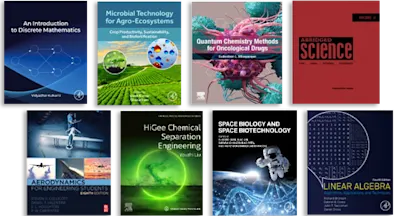
Simulating Protein Folding in Variable Environmental Conditions
Transformation from Globular Proteins to Amyloids
- 1st Edition - January 1, 2026
- Latest edition
- Editor: Irena Roterman-Konieczna
- Language: English
Simulating Protein Folding in Variable Environmental Conditions: Transformation from Globular Proteins to Amyloids explores the complex relationship between environmental factor… Read more

Simulating Protein Folding in Variable Environmental Conditions: Transformation from Globular Proteins to Amyloids explores the complex relationship between environmental factors and the intricate protein folding process. Through detailed analysis, the book investigates how conditions such as water and membrane environments can influence the transformation of globular proteins into amyloids, shedding light on the underlying mechanisms of misfolding. Central to its approach is the fuzzy oil drop model (FOD-M), which quantitatively measures the impact of external stimuli on protein structure. This resource is invaluable for those seeking to understand how external forces drive folding and misfolding at the molecular level.
Beyond its foundational exploration of amyloid transformation, the book provides a thorough introduction to model simulation hypotheses and evaluates the significance of environmental changes on protein behavior. It addresses the importance of accurately representing external conditions and how these variations contribute to altered folding pathways.
Beyond its foundational exploration of amyloid transformation, the book provides a thorough introduction to model simulation hypotheses and evaluates the significance of environmental changes on protein behavior. It addresses the importance of accurately representing external conditions and how these variations contribute to altered folding pathways.
- Offers a model for simulating amyloid transformation in silico
- Explores how external properties influence the structural rearrangement of proteins
- Considers various types of amyloids, including α-synuclein, transthyretin endorphin, prefoldin, and chaperonin to demonstrate the role of external force in the protein transformation process
Researchers working with protein misfolding across molecular biology, structural biology, biochemistry, and computational biology
Part I: The amyloid transformation
1. The hypothesis - the biochemistry of amyloids
2. Three examples of different scenarios of amyloid transformation
Part II: Role of local environment in proteins structurization
3. Water environment
4. Membrane environment
5. General universal form to express the external force field
Part III: Local environment representation in programs oriented on protein structure prediction
6. Presentation of protocol for In Silico folding simulation Part IV: Specificity of secondary structure in amyloids
7. Analysis of secondary structure specificity as it appears in amyloids
Part V: The complete spectrum of environment influence (external force field) on protein folding
8. The examples of protein representing the micelle-like construction
9. The examples of proteins with participation of external force field in moderate degree
10. The trans-membrane proteins as examples of high influence of local environment on protein structurization
11. Enzymes – their protein body - as objects delivering the local external force field for catalytic reaction
12. Folding in assistance of chaperonin, chaperon, prefoldin – analysis as expressed by FOD-M model
Part VI: Alternative models for amyloid interpretation
13. Alternative models
1. The hypothesis - the biochemistry of amyloids
2. Three examples of different scenarios of amyloid transformation
Part II: Role of local environment in proteins structurization
3. Water environment
4. Membrane environment
5. General universal form to express the external force field
Part III: Local environment representation in programs oriented on protein structure prediction
6. Presentation of protocol for In Silico folding simulation Part IV: Specificity of secondary structure in amyloids
7. Analysis of secondary structure specificity as it appears in amyloids
Part V: The complete spectrum of environment influence (external force field) on protein folding
8. The examples of protein representing the micelle-like construction
9. The examples of proteins with participation of external force field in moderate degree
10. The trans-membrane proteins as examples of high influence of local environment on protein structurization
11. Enzymes – their protein body - as objects delivering the local external force field for catalytic reaction
12. Folding in assistance of chaperonin, chaperon, prefoldin – analysis as expressed by FOD-M model
Part VI: Alternative models for amyloid interpretation
13. Alternative models
- Edition: 1
- Latest edition
- Published: January 1, 2026
- Language: English
IR
Irena Roterman-Konieczna
Professor Irena Roterman-Konieczna completed her PhD at the Nicolaus Copernicus Medical Academy Krakow, Poland and undertook her postdoctoral studies at Cornell University, USA. She is the director of the Department of Bioinformatics and Telemedicine at Jagiellonian University – Medical College, Poland. Her fields of interest are protein structure, folding simulation as well as systems biology. She is the author of "Protein Folding in Silico", published by Woodhead Publishing in 2012., and "From Globular Proteins to Amyloids" published by Elsevier in 2020. She is the Chief Editor of the journal Bio-Algorithms and Med-Systems (de Gruyter).
Affiliations and expertise
Professor of Bioinformatics, Jagiellonian University, Poland